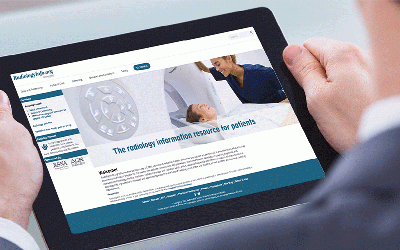
June 5, 2024 — RadiologyInfo.org, a leading source of medical imaging information for the general public, has introduced a new series of articles and videos to help patients understand their radiology exam reports.
Reports of radiology exam results can be a source of anxiety for many patients. Written by doctors for doctors, the reports often use medical terms that are unfamiliar to the general public.
Thanks to technological advances and recent legislation, these reports are increasingly made available directly to patients via electronic health records and patient portal systems. As a result, patients may see the report before their primary care doctor has a chance to review it.
To help patients make sense of what they’re reading, RadiologyInfo.org, produced by the Radiological Society of North America (RSNA) and the American College of Radiology (ACR), developed a series of “How to Read Your Radiology Report” articles and “Understanding Your Radiology Report” videos.
“Radiology reports are increasingly available to patients online,” said Jay Pahade, M.D., associate professor of radiology and biomedical imaging and vice chair of Quality and Safety, Radiology & Biomedical Imaging at Yale University, and co-chair of the RSNA-ACR Public Information Website Committee. “Without guidance, patients may experience a lot of anxiety, as they try to understand what they’re reading. These articles and videos on RadiologyInfo.org give patients the information they need to understand their results and to have important conversations about their health with their doctor.”
Written and produced by doctors for patients, the articles and videos highlight which areas of a radiology report are of the most interest to patients and describe what they will find there. In the videos, radiologists share some common findings while displaying sample imaging exams.
Several “How to Read Your Radiology Report” articles have been added to RadiologyInfo.org with more to come. Current article titles include:
- How to Read Your Radiology Report
- How to Read Your Abdominal and Pelvic CT Report
- How to Read Your Abdominal Ultrasound Report
- How to Read Your Brain MRI Radiology Report
- How to Read Your Breast Imaging Report using BI‑RADS
- How to Read Your Chest X-ray Report
- How to Read Your Liver Imaging Report using LI-RADS
- How to Read Your Prostate MRI Report.
Current videos include:
- Understanding your Abdominal and Pelvic CT Report
- Understanding Your Chest X-ray Report
- Understanding Your Brain MRI Report.
“These articles and videos are a perfect match to the existing content on RadiologyInfo.org,” said Andrew J. Gunn, M.D., associate professor and director of the Division of Interventional Radiology at the University of Alabama at Birmingham and co-chair of the RSNA-ACR Public Information Website Committee. “Like the rest of the website, they provide patients with information they can both trust and use to make informed decisions about their health care.”
RadiologyInfo.org uses easy-to-understand language to inform patients how various x-ray, CT, MRI, ultrasound, radiation therapy and other procedures are performed. It also addresses what patients may experience and how to prepare for the exams. Available in English and Spanish, the site receives more than 1 million visits each year.
RadiologyInfo.org contains 300 procedure, exam and disease descriptions covering diagnostic and interventional radiology, nuclear medicine, radiation therapy and radiation safety and is updated frequently with new information.
All material on the RadiologyInfo.org website is reviewed and approved by experts in the field of radiology from RSNA and the ACR, as well as other professional radiology organizations.
For more information: www.rsna.org


 August 06, 2024
August 06, 2024 








